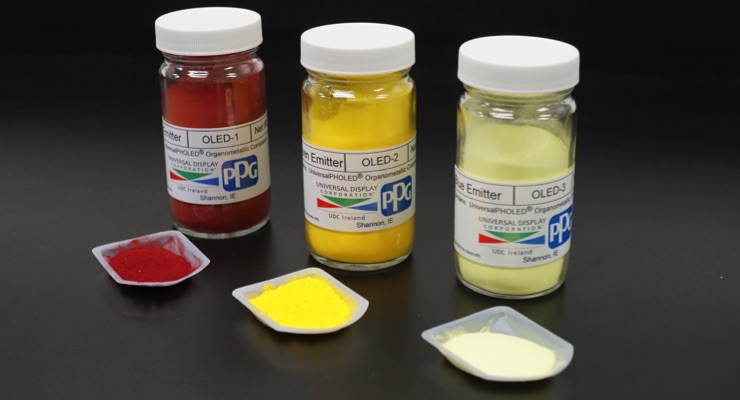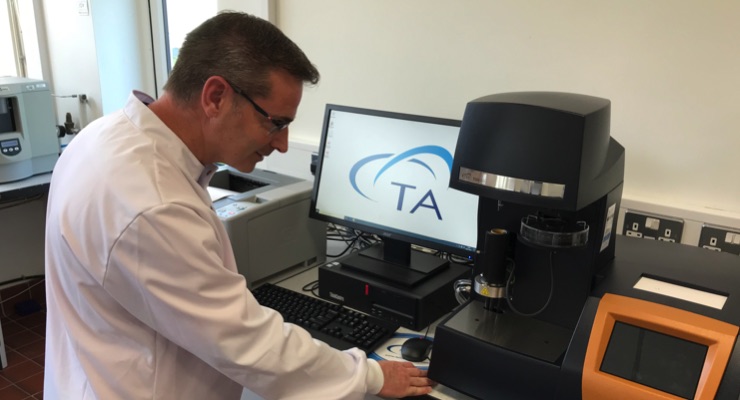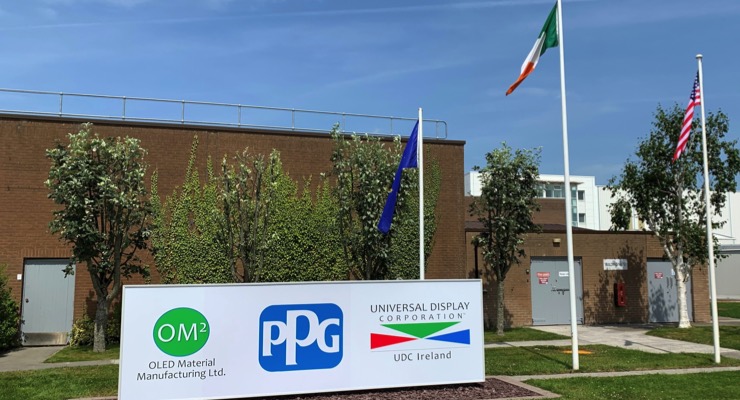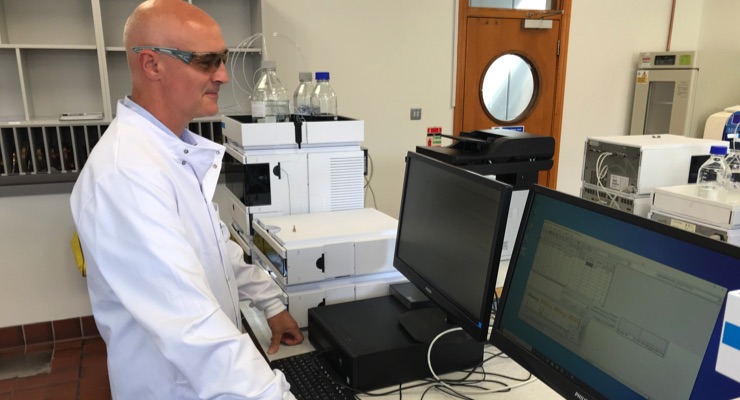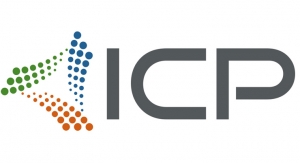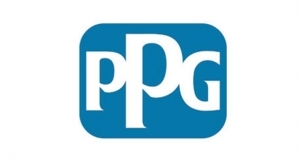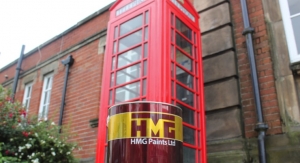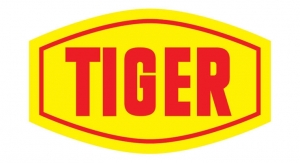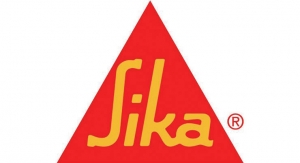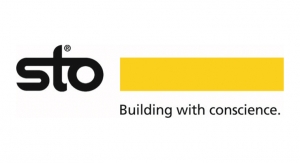David Savastano, Contributing Editor08.25.21
The OLED market is growing quickly. OLED displays can be found in virtually every display segment, from TVs to computers to smartphones. With its UniversalPHOLED phosphorescent technology, Universal Display Corporation (UDC) is a leading supplier of OLED materials for display and solid-state lighting applications.
PPG has been partnering with Universal Display for more than 20 years, manufacturing its UniversalPHOLED materials. PPG is, of course ,best known as one of the largest global suppliers of paints, coatings, and specialty materials, with reported net sales of $13.8 billion in 2020.
PPG’s Specialty Coatings and Materials (SCM) business, which is collaborating with Universal Display, includes five core product groups: precipitated silica, optical monomers and coatings, PPG TESLIN synthetic paper, photochromic dyes and the phosphorescent OLED materials it produces for Universal Display.
Universal Display is growing quickly, as is the OLED market. In order to meet the increased need for OLED materials,Universal Display and PPG announced that OLED Material Manufacturing Ltd. (OM2), a subsidiary of UDC, and PPG are embarking on a multi-million-euro capital investment that is expected to create up to 100 high-tech jobs at a new manufacturing site in Shannon, Ireland.
Facility renovations and regulatory approvals at the Shannon site are expected to be completed in the next 12 months, with operations beginning in 2022.
Carol Bateman, PPG global business development director, Specialty Synthesis Group, said that PPG is proud of its 20+ year strategic partnership with Universal Display Corporation.
“Our companies have been working together since 2000,” Bateman noted. “This was when televisions were predominantly cathode-ray tubes and OLEDs were in the early research and development stages. As demand for OLED materials has increased, so has the depth of our relationship. Together we have expanded production capacity from PPG’s Monroeville, PA, facility to our Barberton, OH, site in 2014 and now Shannon, Ireland.”
“Over 20 years ago, UDC and PPG met to discuss market and business opportunities for UDC’s phosphorescent OLED technology,” said Janice Mahon, SVP of technology commercialization and GM, commercial sales business, Universal Display Corporation. “With PPG’s best-in-class manufacturing expertise and highly-skilled workforce complementing UDC’s innovation and entrepreneurial prowess, our partnership was formed. Since then, our partnership has continued to grow stronger each year.”
Bateman noted that OLED displays can be found in virtually every consumer product.
“The state-of-the-art, energy-efficient OLED emitters that UDC invents and develops and PPG produces can be found in virtually every OLED consumer product in the world, from smartwatches and smartphones to laptops, tablets and TVs, including cutting-edge foldable and rollable consumer electronic products,” Bateman said.
There were technological challenges that needed to be addressed. Bateman pointed out that UDC’s OLED emitters that PPG produces are highly specialized small molecule chemicals that use manufacturing processes similar to those in the pharmaceutical industry.
“The quality requirements for OLED materials exceed any other industry and require our chemists to look at details that often push the limits of even the most leading-edge analytical equipment available,” added Bateman. “Our analytical and manufacturing expertise enables us to meet these requirements in the quickly evolving OLED space.
“Our experience in manufacturing ultra-high-purity specialty materials enables us to collaborate with UDC in the rapid development and commercialization of cutting-edge emitters ranging from small R&D amounts to high-volume production while ensuring excellent quality, and consistent supply,” Bateman observed. “We are also able to support the continued growth of OLED display technology through the rapid design, build and start-up of new capacity to support UDC’s expanding global customer base.”
The Advantages of OLEDs
There are numerous advantages of OLED materials. Mahon observed that Universal Display’s proprietary UniversalPHOLED technology and materials center on luminous, i.e., energy, efficiencies that are up to four times higher than with conventional fluorescent OLED materials.
“Within the consumer electronics market, you can find OLED proliferation in smartphones, tablets, notebooks and TVs as well as niche markets like smartwatches, automotive and AR/VR, based on OLED’s truly exceptional visual performance, including color rendering, brightness and contrast ratio,” said Mahon.
“UniversalPHOLED technology enhances the performance of consumer displays and lighting products – providing real power savings advantages – for longer battery operation in portable electronics and less energy consumption in larger display and lighting products,” Mahon added.
“UDC’s OLED technology aligns with PPG’s commitment to ‘protect and beautify’ the world through delivering innovative and sustainable product solutions,” Bateman said. “When you couple the power savings benefits with the versatility to make displays on rigid and flexible surfaces, display manufacturers are able to design new products with new form factors that are thin, lightweight, flexible, beautiful – and energy-efficient.”
OLEDs have the unique ability of being able to be used in flexible applications, which opens the door for flexible and rollable displays.
“Adding the capability to build OLEDs on flexible substrates, like plastic and metal foil, OLED can have conformable, bendable and foldable form factors that are further expanding and broadening OLEDs adoption into these consumer electronics markets as well as into industrial, automotive and avionics sectors.”
The Bright Future of OLEDs
Bateman and Mahon both see huge opportunities ahead for OLEDs.
“One of the reasons our partnership has been so successful is because UDC is an innovation leader in the OLED space, and their customer-centric approach to creating mutual value closely aligns with ours,” Bateman noted. “Because of this, we’re truly excited about the future of OLED technology.”
“Like UDC, we feel there are numerous applications that will benefit from the incorporation of OLED materials,” Bateman said. “OLED televisions present an exciting opportunity for consumers to have the same quality display on their wall as they have with the smart phone they hold in their hand. Another promising area is with the adoption of OLED technology in the automotive industry as we see the continued electrification of vehicles.”
“It’s exciting times with the growing proliferation of beautiful, brilliant OLEDs in the consumer electronics landscape,” Mahon concluded. “In smartphones, according to market research reports, we will approach close to 50% penetration by the end of this year. In IT (notebooks and tablets) and TVs, while still in early chapters of adoption, OLED momentum is increasing with a broadening portfolio of new products. And because OLEDs are inherently conformable, bendable and rollable and can be manufactured on glass, metal foil or plastic, this disruptive technology is poised to expand the definition of what a consumer product can be.”
PPG has been partnering with Universal Display for more than 20 years, manufacturing its UniversalPHOLED materials. PPG is, of course ,best known as one of the largest global suppliers of paints, coatings, and specialty materials, with reported net sales of $13.8 billion in 2020.
PPG’s Specialty Coatings and Materials (SCM) business, which is collaborating with Universal Display, includes five core product groups: precipitated silica, optical monomers and coatings, PPG TESLIN synthetic paper, photochromic dyes and the phosphorescent OLED materials it produces for Universal Display.
Universal Display is growing quickly, as is the OLED market. In order to meet the increased need for OLED materials,Universal Display and PPG announced that OLED Material Manufacturing Ltd. (OM2), a subsidiary of UDC, and PPG are embarking on a multi-million-euro capital investment that is expected to create up to 100 high-tech jobs at a new manufacturing site in Shannon, Ireland.
Facility renovations and regulatory approvals at the Shannon site are expected to be completed in the next 12 months, with operations beginning in 2022.
Carol Bateman, PPG global business development director, Specialty Synthesis Group, said that PPG is proud of its 20+ year strategic partnership with Universal Display Corporation.
“Our companies have been working together since 2000,” Bateman noted. “This was when televisions were predominantly cathode-ray tubes and OLEDs were in the early research and development stages. As demand for OLED materials has increased, so has the depth of our relationship. Together we have expanded production capacity from PPG’s Monroeville, PA, facility to our Barberton, OH, site in 2014 and now Shannon, Ireland.”
“Over 20 years ago, UDC and PPG met to discuss market and business opportunities for UDC’s phosphorescent OLED technology,” said Janice Mahon, SVP of technology commercialization and GM, commercial sales business, Universal Display Corporation. “With PPG’s best-in-class manufacturing expertise and highly-skilled workforce complementing UDC’s innovation and entrepreneurial prowess, our partnership was formed. Since then, our partnership has continued to grow stronger each year.”
Bateman noted that OLED displays can be found in virtually every consumer product.
“The state-of-the-art, energy-efficient OLED emitters that UDC invents and develops and PPG produces can be found in virtually every OLED consumer product in the world, from smartwatches and smartphones to laptops, tablets and TVs, including cutting-edge foldable and rollable consumer electronic products,” Bateman said.
There were technological challenges that needed to be addressed. Bateman pointed out that UDC’s OLED emitters that PPG produces are highly specialized small molecule chemicals that use manufacturing processes similar to those in the pharmaceutical industry.
“The quality requirements for OLED materials exceed any other industry and require our chemists to look at details that often push the limits of even the most leading-edge analytical equipment available,” added Bateman. “Our analytical and manufacturing expertise enables us to meet these requirements in the quickly evolving OLED space.
“Our experience in manufacturing ultra-high-purity specialty materials enables us to collaborate with UDC in the rapid development and commercialization of cutting-edge emitters ranging from small R&D amounts to high-volume production while ensuring excellent quality, and consistent supply,” Bateman observed. “We are also able to support the continued growth of OLED display technology through the rapid design, build and start-up of new capacity to support UDC’s expanding global customer base.”
The Advantages of OLEDs
There are numerous advantages of OLED materials. Mahon observed that Universal Display’s proprietary UniversalPHOLED technology and materials center on luminous, i.e., energy, efficiencies that are up to four times higher than with conventional fluorescent OLED materials.
“Within the consumer electronics market, you can find OLED proliferation in smartphones, tablets, notebooks and TVs as well as niche markets like smartwatches, automotive and AR/VR, based on OLED’s truly exceptional visual performance, including color rendering, brightness and contrast ratio,” said Mahon.
“UniversalPHOLED technology enhances the performance of consumer displays and lighting products – providing real power savings advantages – for longer battery operation in portable electronics and less energy consumption in larger display and lighting products,” Mahon added.
“UDC’s OLED technology aligns with PPG’s commitment to ‘protect and beautify’ the world through delivering innovative and sustainable product solutions,” Bateman said. “When you couple the power savings benefits with the versatility to make displays on rigid and flexible surfaces, display manufacturers are able to design new products with new form factors that are thin, lightweight, flexible, beautiful – and energy-efficient.”
OLEDs have the unique ability of being able to be used in flexible applications, which opens the door for flexible and rollable displays.
“Adding the capability to build OLEDs on flexible substrates, like plastic and metal foil, OLED can have conformable, bendable and foldable form factors that are further expanding and broadening OLEDs adoption into these consumer electronics markets as well as into industrial, automotive and avionics sectors.”
The Bright Future of OLEDs
Bateman and Mahon both see huge opportunities ahead for OLEDs.
“One of the reasons our partnership has been so successful is because UDC is an innovation leader in the OLED space, and their customer-centric approach to creating mutual value closely aligns with ours,” Bateman noted. “Because of this, we’re truly excited about the future of OLED technology.”
“Like UDC, we feel there are numerous applications that will benefit from the incorporation of OLED materials,” Bateman said. “OLED televisions present an exciting opportunity for consumers to have the same quality display on their wall as they have with the smart phone they hold in their hand. Another promising area is with the adoption of OLED technology in the automotive industry as we see the continued electrification of vehicles.”
“It’s exciting times with the growing proliferation of beautiful, brilliant OLEDs in the consumer electronics landscape,” Mahon concluded. “In smartphones, according to market research reports, we will approach close to 50% penetration by the end of this year. In IT (notebooks and tablets) and TVs, while still in early chapters of adoption, OLED momentum is increasing with a broadening portfolio of new products. And because OLEDs are inherently conformable, bendable and rollable and can be manufactured on glass, metal foil or plastic, this disruptive technology is poised to expand the definition of what a consumer product can be.”

